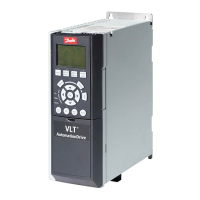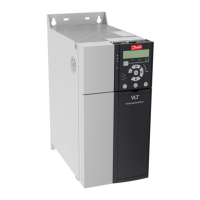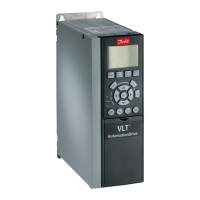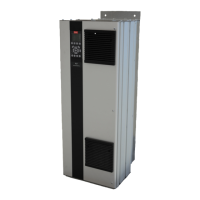NOTE
Check the name plate to ensure that the mains voltage of
the frequency converter matches the power supply of the
plant.
Ensure that the power supply can supply the necessary
current to the frequency converter.
If the unit is without built-in fuses, ensure that the
appropriate fuses have the correct current rating.
4.6.12 External Fan Supply
Frame size D, E, and F
In case the frequency converter is supplied by DC or if the
fan must run independently of the power supply, an
external power supply can be applied. The connection is
made on the power card.
Terminal No. Function
100, 101
102, 103
Auxiliary supply S, T
Internal supply S, T
Table 4.31
The connector located on the power card provides the
connection of line voltage for the cooling fans. The fans
are connected from factory to be supplied form a common
AC line (jumpers between 100-102 and 101-103). If external
supply is needed, the jumpers are removed and the supply
is connected to terminals 100 and 101. A 5 Amp fuse
should be used for protection. In UL applications this
should be LittleFuse KLK-5 or equivalent.
4.6.13
Power and Control Wiring for
Unscreened Cables
WARNING
Induced Voltage!
Run motor cables from multiple frequency converters
separately. Induced voltage from output motor cables run
together can charge equipment capacitors even with the
equipment turned off and locked out. Failure to run
output cables separately could result in death or serious
injury.
CAUTION
Run drive input power, motor wiring, and control wiring in
three separate metallic conduits or raceways for high
frequency noise isolation. Failure to isolate power, motor,
and control wiring could result in less than optimum
controller and associated equipment performance.
Because the power wiring carries high frequency electrical
pulses, it is important that input power and motor power
are run in separate conduit. If the incoming power wiring
is run in the same conduit as the motor wiring, these
pulses can couple electrical noise back onto the building
power grid. Control wiring should always be isolated from
the high voltage power wiring.
When screened/armoured cable is not used, at least three
separate conduits must be connected to the panel option
(see figure below).
•
Power wiring into the enclosure
•
Power wiring from the enclosure to the motor
•
Control wiring
4.6.14
Fuses
It is recommended to use fuses and/ or circuit breakers on
the supply side as protection in case of component break-
down inside the frequency converter (first fault).
NOTE
This is mandatory in order to ensure compliance with IEC
60364 for CE or NEC 2009 for UL.
WARNING
Personnel and property must be protected against the
consequence of component break-down internally in the
frequency converter.
Branch Circuit Protection
In order to protect the installation against electrical and
fire hazard, all branch circuits in an installation, switch
gear, machines etc., must be protected against short-circuit
and over-current according to national/international
regulations.
NOTE
The recommendations given do not cover Branch circuit
protection for UL.
Short-circuit protection:
Danfoss recommends using the fuses/Circuit Breakers
mentioned below to protect service personnel and
property in case of component break-down in the
frequency converter.
Non UL compliance
If UL/cUL is not to be complied with, we recommend using
the following fuses, which will ensure compliance with
EN50178:
How to Install VLT Automation Low Harmonic Drive Operating Instructions
MG34O202 - VLT
®
is a registered Danfoss trademark 47
4 4
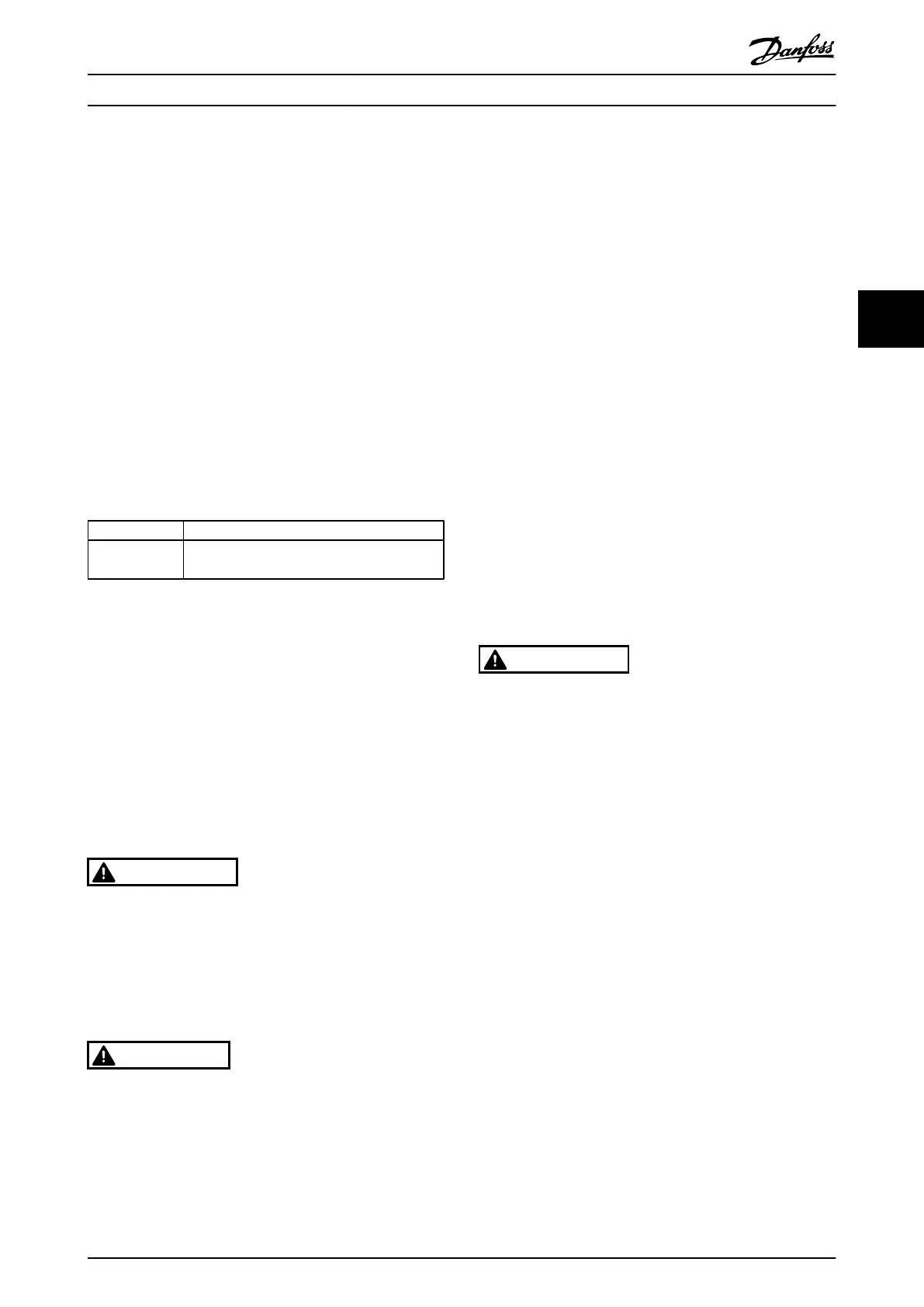